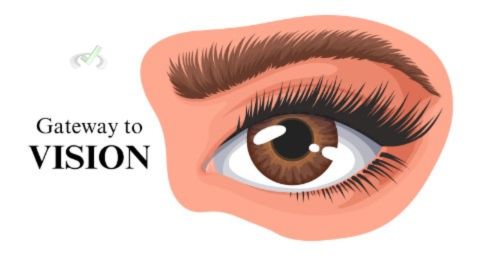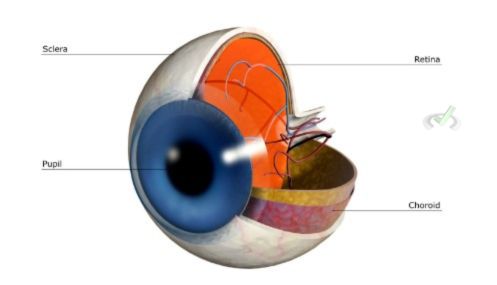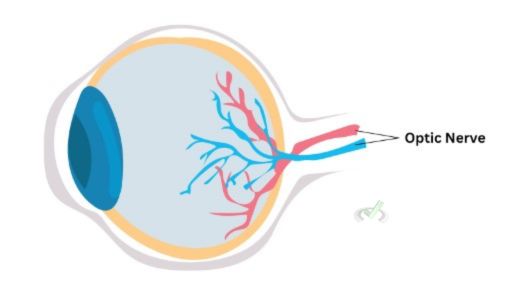Understanding how we see involves complex processes in our eyes and brain. This guide explains how light is turned into signals the brain can understand, which allows us to see and understand the world.
I. Introduction to Visual Signal Transduction
Visual signal transduction is when the eyes convert light into electrical signals. The brain then interprets these signals to create the images we see.
II. The Process of Visual Signal Transduction
A. The Eye: Gateway to Vision

The eye is the first step in seeing. It captures light and begins converting it into signals the brain can use.
- Light Entry: Light enters the eye through the cornea. The cornea is a clear, curved surface at the front of the eye. It focuses light onto the at the back of the eye in the retina.
- The Role of the Lens: The lens is behind the cornea and focuses the light onto the retina. The lens changes shape in order to help focus on objects at different distances. This is called accommodation.
B. The Retina: The Visual Translator

The retina is like a screen that detects light. It has special cells called photoreceptors.
1. Photoreceptors: Rods and Cones
- Rods: These cells help us see in low light. They are very sensitive but do not see colors.
- Cones: These cells help us see in bright light and detect colors. There are three different types of cones, each sensitive to red, green, or blue light.
2. Phototransduction
Phototransduction is when photoreceptors turn light into electrical signals. This happens through a chemical reaction in the cells. Photopigments in the rods and cones change shape when they absorb light. This starts a chain reaction that changes light into a signal the brain can understand.
C. Other Cells in the Retina
- Bipolar Cells: These cells pass the signals from photoreceptors to ganglion cells.
- Ganglion Cells: Their axons make up the optic nerve, carrying signals to the brain.
- Horizontal and Amacrine Cells: These cells help process and refine the visual signals.
III. The Visual Pathway: From Eye to Brain
A. The Optic Nerve: The Visual Highway

The optic nerve transports electrical signals from the retina to the brain. Some fibers cross to the other side at the optic chiasm. This crossing helps the brain process visual information from both eyes.
B. The Brain: Processing the Visual Information
The brain's visual cortex, found at the back of the head, processes the signals. It helps us understand shapes, colors, and movements.
1. Visual Cortex Functions
- Primary Visual Cortex (V1): This area receives the signals and starts processing basic shapes and patterns.
- Higher Visual Areas: These areas interpret complex details like colors, movement, and depth.
IV. Importance of Visual Signal Transduction
A. Visual Acuity and Color Vision
This process is essential for clear vision and color perception. Problems in any part can lead to blurred vision or color blindness.
B. Understanding Visual Disorders
Disorders like glaucoma can damage the optic nerve. Conditions like macular degeneration affect the retina. Both can lead to vision loss.
V. Bridge: Connecting Visual Signal Transduction to Other Areas
A. Neurotransmitters in Visual Processing
Neurotransmitters, like glutamate, are chemicals that help transfer signals from the retina to the brain. They are important in visual processing.
B. Neuroplasticity and Vision
Neuroplasticity is the brain's ability to adapt and change. It helps people recover from visual impairments by creating new neural connections.
C. Vision and Psychological Disorders
Some psychological conditions, like schizophrenia, involve visual hallucinations. Others, like autism, can include differences in visual processing.
D. Comparative Anatomy
Studying the visual systems of different animals helps us understand human vision and its evolution. For example, some animals see ultraviolet light, which humans cannot.
VI. Wrap-Up and Key Terms
Visual signal transduction is the process that converts light into electrical signals in our eyes, which the brain then interprets as images. It involves the cornea, lens, retina, and optic nerve. Rods help us see in low light, while cones detect color.
This process is essential for a clear vision and understanding of the world around us. Understanding these basics helps in recognizing and addressing vision disorders.
Key Terms
- Phototransduction: The process of turning light into electrical signals in the retina.
- Rods and Cones: Types of photoreceptor cells in the retina; rods detect low light, and cones detect color.
- Optic Nerve: The nerve carrying signals from the retina to the brain.
- Visual Cortex: The part of the brain that processes visual information.
VII. Practice Questions
Test your understanding with these questions:
Sample Practice Question 1
What is the primary function of rods in the retina?
A. Detecting colors in bright light
B. Detecting movement in the periphery
C. Seeing in low light conditions
D. Focusing light onto the retina
Ans. C
Rods are specialized for low light vision, helping us see in dim conditions but not detect colors.
Sample Practice Question 2
Which part of the human eye changes shape to focus light onto the retina?
A. Cornea
B. Lens
C. Optic nerve
D. Retina
Ans. B
The lens adjusts its shape to focus light precisely on the retina, a process known as accommodation.







 To help you achieve your goal MCAT score, we take turns hosting these
To help you achieve your goal MCAT score, we take turns hosting these 





















 reviews on TrustPilot
reviews on TrustPilot